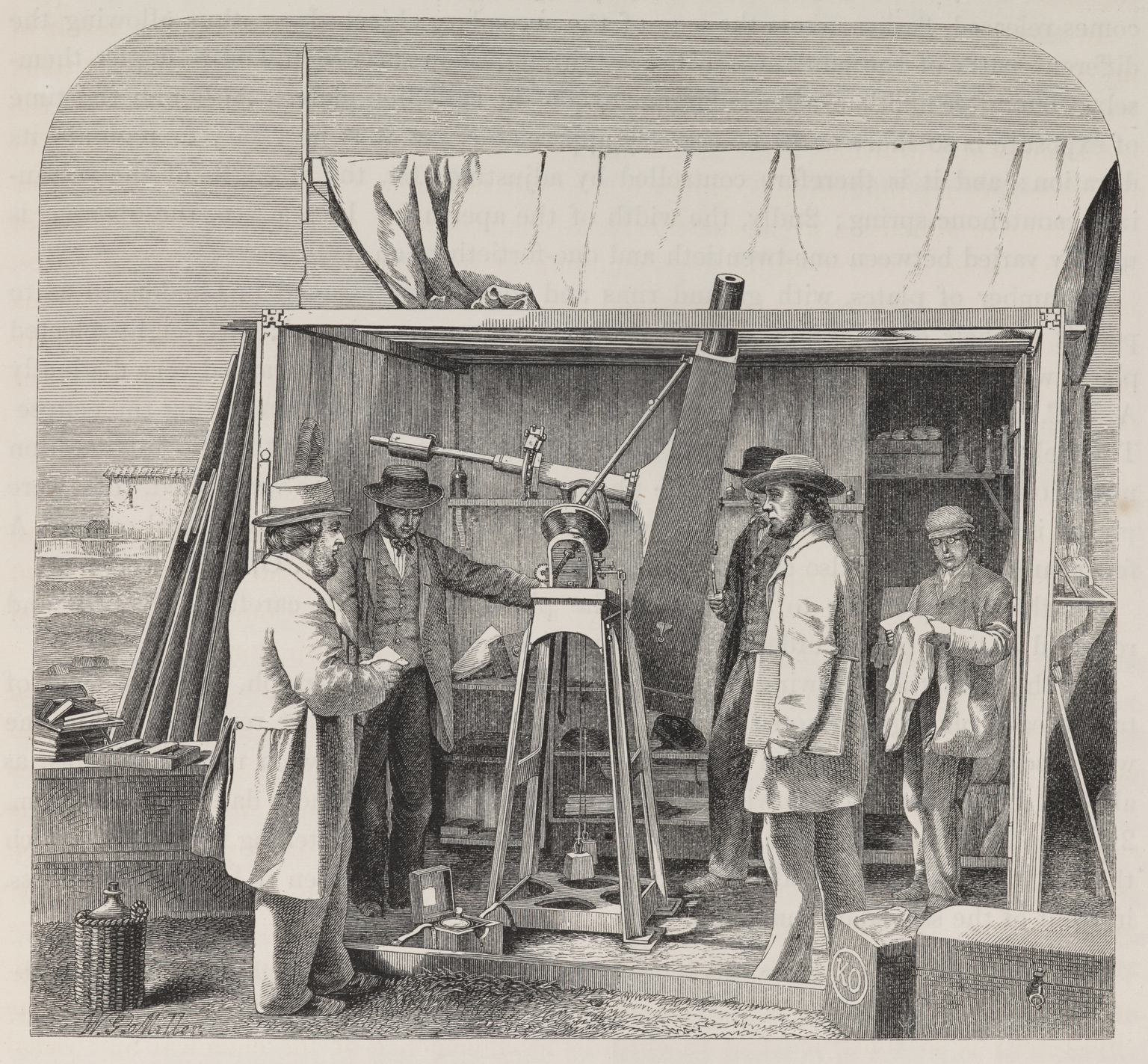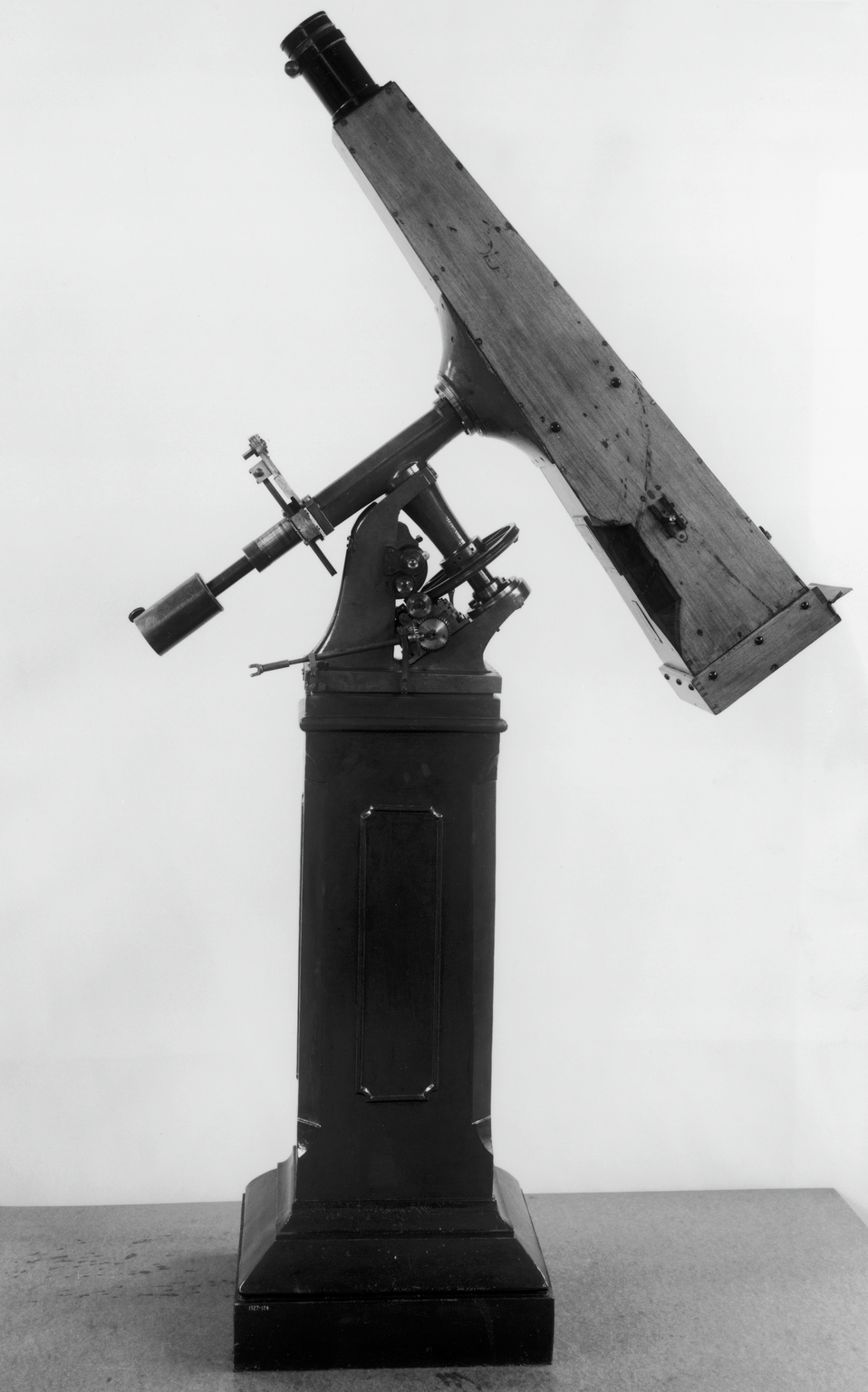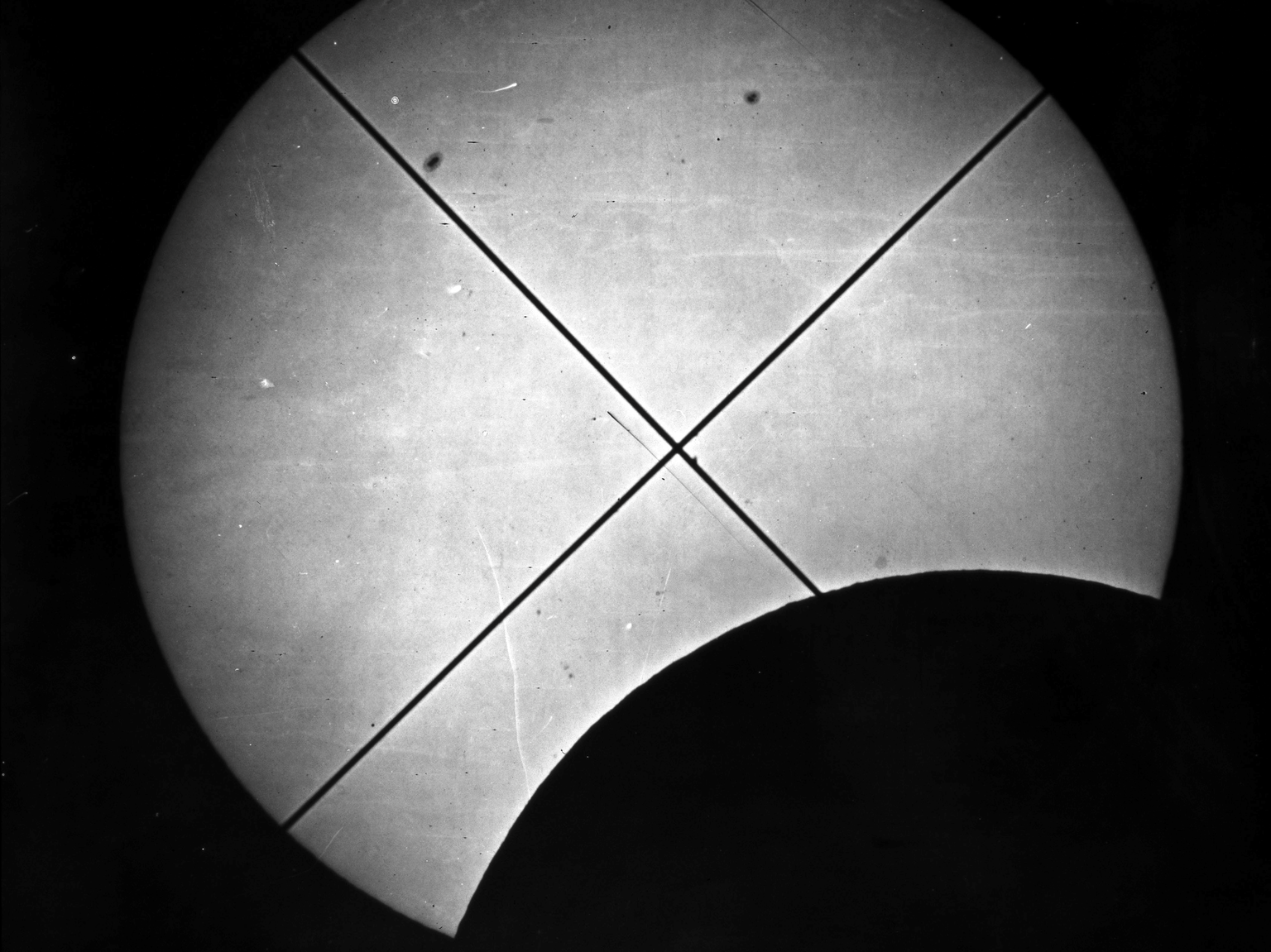So, did any of you make it to Easter Island to see last weekend’s total solar eclipse? The path of totality crossed very few landmasses, so observing this eclipse was for the most intrepid travellers. Next weekend marks the 150th anniversary of a solar eclipse which was somewhat less remote – but observed by some very intrepid travellers, who for the first time used photography to settle a scientific debate.
On 18 July 1860, Warren De la Rue and his team eagerly awaited the eclipse in their makeshift wooden observatory at Rivabellosa in northern Spain. The observatory and its contents – some two tons of apparatus – had been transported from Plymouth to Bilbao on board HMS Himalaya and then by stagecoach to Rivabellosa, where De la Rue persuaded a local farmer to set aside his threshing floor for the observatory.

The key piece of apparatus was the Kew Photoheliograph, designed by De la Rue a few years before. The first instrument specifically designed to photograph celestial objects, it was regularly used at Kew Observatory to record images of the Sun and Moon. The astronomers hoped that its wet collodion plates, with their short exposure times, could record the prominences visible during a solar eclipse. At the time it was not known whether these were part of the Sun, or an effect of the Earth’s atmosphere.

Working in the hot Spanish summer, the astronomers only had a few minutes to develop each plate before the wet collodion dried. But they successfully recorded prominences on several plates – De la Rue described them with names including Cauliflower and Boomerang. When the photographs were compared with ones taken by Fr Angelo Secchi 500km away at Desierto de las Palmas, the two sets were so similar that they proved prominences are intrinsic to the Sun.

For a lively account of the Rivabellosa expedition – including the tale of how the observatory almost burned down just minutes before the eclipse(!) – check out Stuart Clark‘s The Sun Kings.